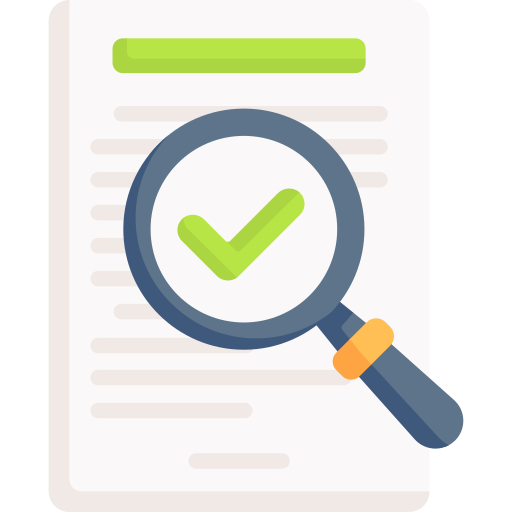Five years ago, I had never even heard of AI. Now it’s everywhere! But I still have no idea how it works or why it sometimes does weird things.
–Minsu
Over a span of just a few years, AI tools have become part of almost everyone’s daily lives. They help us draft emails, generate ideas, find answers to questions, and even write full documents. But how do AI tools like ChatGPT actually work? Is it the same as having a personal robot assistant, or is there something else going on behind the scenes?
Let’s find out!
Need Editing and
Proofreading Services?

What is AI, anyway?
Artificial Intelligence (AI) might seem like science fiction, but it’s really just a sophisticated computer program. It is designed to mimic human-like tasks such as writing text, recognizing/creating images, and even holding a conversation.
The AI that helps you generate text is called a language model. It is trained to predict what word should come next in a sentence based on billions—yes, billions!—of examples from books, articles, websites, official documents, and other sources. It’s like a super-advanced version of the predictive text feature on your smartphone.
Algorithms: The “brains” behind AI
So, how does AI decide what it should say? The answer lies in algorithms. An algorithm is like a recipe that tells the AI how to take data, analyze it, and create something new.
Here’s how it works:
- Input: You give the AI a prompt, such as “I had a great experience at a restaurant and want to write a positive review on Google”.
- Analysis: The AI looks at the words you used and tries to figure out what you want it to do. It breaks down your request into different pieces and finds patterns to match them.
- Prediction: The AI tool uses its enormous database to predict the most likely words that will form a logical, human-sounding response.
What’s most incredible is how fast this process happens. In just seconds, AI tools can generate a detailed response that (usually, but not always) reads like it was written by a human.
Can AI understand what it’s writing?
No, an AI tool cannot understand words the same way humans do. It doesn’t have emotions, opinions, or real-world experiences. When you ask it to write a review of a restaurant, the AI doesn’t draw on any real memories of actually eating in different places. How can it? It’s not human. It is incapable of eating!
Instead, the AI tool simply generates text based on how often certain words appear together in the data it has been trained on. For “restaurant”, it would find words such as “eating”, “dining”, “service”, “dessert”, “atmosphere”, “price”, and much more.
For another example, let’s say you type “Once upon a time” into the AI’s text box. The AI might predict “there was a princess” is a likely next phrase because that pattern exists in multiple fairy tales within its database.
Why does AI make such weird mistakes?
AI tools are powerful, but they aren’t perfect. Sometimes they produce responses that are incomplete, confusing, or just plain wrong. Some of the mistakes AI tools make can even be amusing, especially when you ask them to create art. Take a look at this AI-generated photo:

The AI tool had been prompted to “generate a photo realistic image of an American barnyard with a farmer and lots of animals”. For the most part, the AI succeeded. But if you look carefully, there are some oddities, particularly the small black-and-white animal with the bloated pink belly. What is that?
So, why do these mistakes happen?
- Context confusion: AI might misinterpret your instructions and give you something off-topic.
- Not enough information: When you prompt an AI tool, you need to give it specific information. Going back to our restaurant review example, the AI won’t know if you had sushi or chicken nuggets or barbecued ribs unless you type that information into the text box.
- Bias in the data: AI learns from human-written content, and if the data it has been trained on is biased, outdated, or false, the output can reflect that.
- Limitations in creativity: AI is great at following patterns, but it isn’t truly creative. It can mimic creativity, but the spark of originality is still up to you.
Need Editing and
Proofreading Services?

AI tools will keep getting smarter. At the time of this writing, the new Chinese AI tool Deep Seek has been generating headlines. But if you’re reading this article in 2026 or 2027, a newer, faster, more shiny AI tool has probably taken Deep Seek’s place.
No matter how sophisticated an AI tool may seem, human creativity will always be essential. AI tools are meant to help you save time and spark ideas, not take over your brain. So the next time you use an AI tool, keep in mind that it’s not magic. It’s just smart technology. You are still the one in control!
Because AI tools are not 100 percent reliable, it’s always a good idea to check your AI assisted writing before you send it out into the world. If you want a second set of human eyes to make sure everything is correct and sounds natural, click the blue button below. Our team of human editors at TextRanch will be happy to help you!








Ask an Editor: A New TextRanch Feature!
Proofreading vs. Editing: What’s the Difference?
Human Editors: Why Do You Need One?
How can I improve my understanding of native-English speakers? Part 1